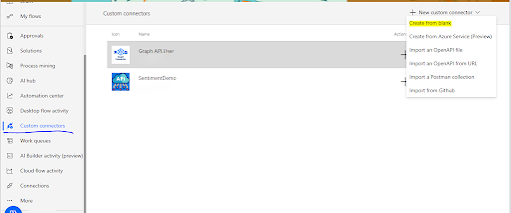Step-by-Step: Give Unique Permissions to OneDrive Files Using Power Automate and Graph API (No Premium License Needed)

We are uploading files through Power Apps using the Attachment control. In the backend, a Power Automate flow uploads these files to OneDrive and assigns unique permissions . Since Power Automate does not have a built-in connector to directly assign unique permissions in OneDrive, we are handling this through the Microsoft Graph API (without using a custom connector). Step 1: Create a Blank Power Apps Application Open Power Apps Studio. Select New app > Start with a page design as shown below. Step 2 : select Blank Canvas Step 3: Add an Attachment Control In Power Apps, the Attachment control is not available directly from the standard controls list. To get the Attachment control: Add an Edit Form to your app. Connect the form to a SharePoint list . Once connected, the form will automatically include the Attachments field. You can then use this Attachment control to upload files. Step 4: Keep Only the Attachment Control Since we only need th...
